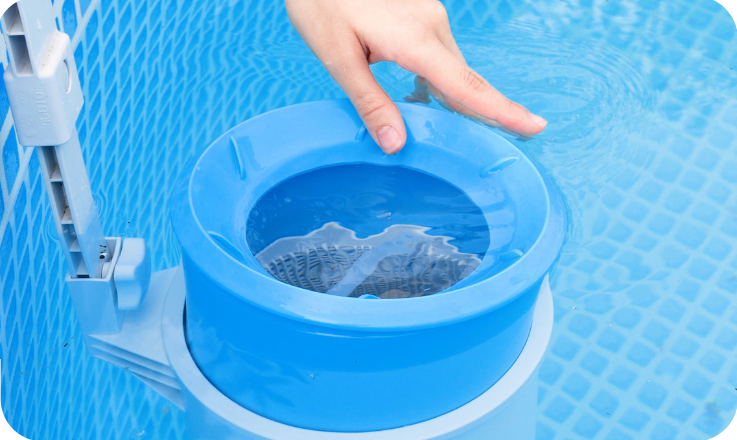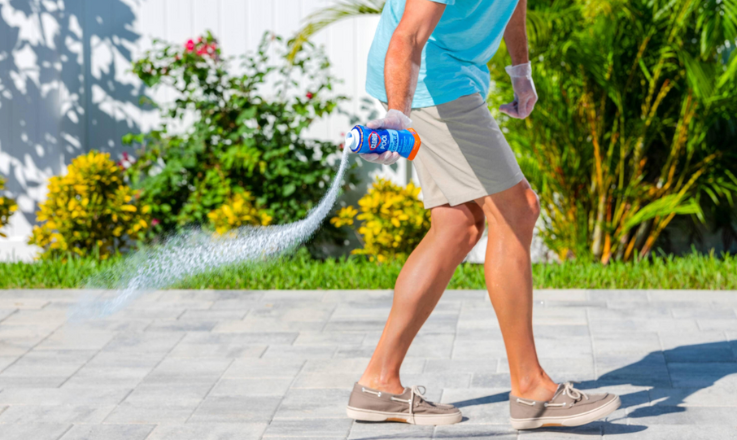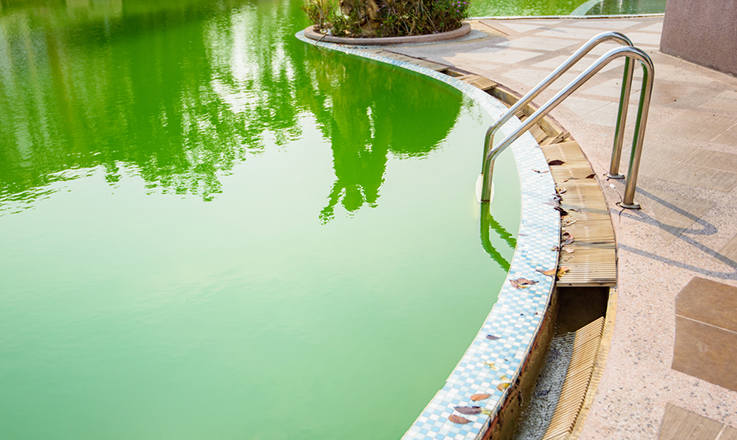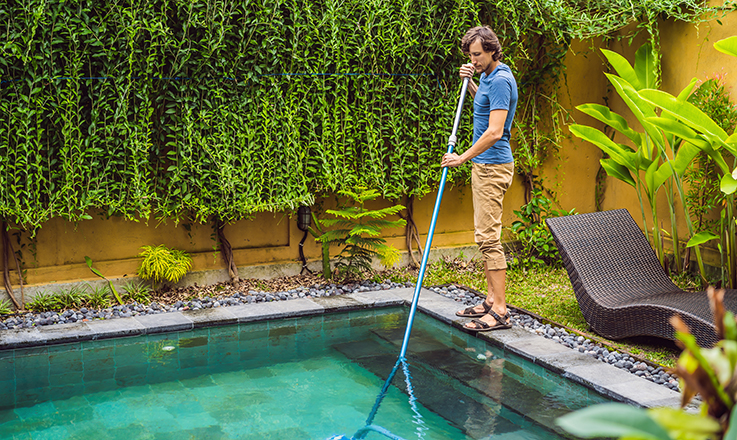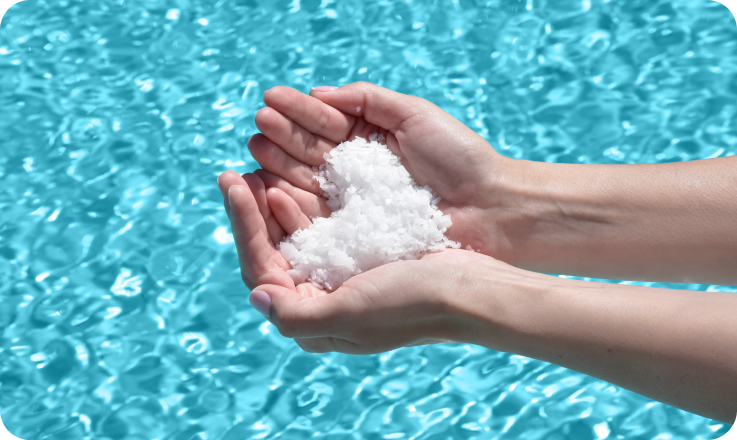Seasonal Pool Maintenance 101: How to Own Your Pool
As the temperatures rise and the days get longer, there's nothing quite like diving into a refreshing pool to beat the summer heat. For new pool owners, the concept of seasonal pool maintenance can be overwhelming. We have you covered. In this helpful guide, we’ll walk you through the essential tips and tricks from spring pool maintenance to fall, and everything in between.
Spring Pool Opening: Prepare for a Splashing Start to the Season
After a long winter, there’s nothing more exciting than the first day of the pool season. Getting your pool ready takes some work, but we’re here to make your pool opening successful. Ready? Read on to become a master of pool opening.
Remove the pool cover and clean it
The first step is to carefully remove the pool cover, ensuring no debris falls into the water. Remember, your cover has been on your pool all winter, so it likely has collected debris. Before folding it for storage, find a large area to open it completely. Clean the cover thoroughly with a pressure washer or a high-pressure hose before storing it to prevent any growth of dirt.
Inspect pool equipment
Check your pool equipment, such as the pump, filter, and heater, for any signs of damage. Replace any worn-out parts and ensure proper reassembly for optimal performance.
Test and balance water chemistry
Get a water sample and test it using a reliable pool water testing kit. Adjust the pH, alkalinity, and sanitizer levels accordingly to maintain a safe and balanced pool environment.
Shock and start the filtration system
Give your pool a fresh start by shocking it with a pool shock treatment to eliminate any lingering bacteria or organic growth. While there are plenty of chemical pool shock choices, regular liquid chlorine does the job. After, prime and start the filtration system to keep the water clean and clear.
Address any necessary repairs or maintenance
Winter is rough on your pool area and equipment. Inspect the pool structure for cracks, leaks, or any other issues. Address them promptly before beginning your pool season to prevent further damage (or pool downtime) and ensure a smooth pool season ahead.
Summer Pool Cleaning: Essential Tips
Now that your pool is open and ready for splash action, it's crucial to maintain its cleanliness throughout the hotter months with summer pool care. Remember, the key to a crystal-clear pool is diligent maintenance throughout your season.
Skim and remove debris
Regularly skim the pool's surface using a leaf net or skimmer to remove leaves, insects, and other debris. This simple step goes a long way in keeping your pool water clear.
Brush and vacuum the pool
Brush the pool walls, steps, and corners to prevent the buildup of growth or stains. Vacuum the pool floor to remove any dirt or debris that has settled. A Dolphin robotic pool vacuum cleaner does a masterful job of doing this for you, so consider investing in one.
Maintain proper water chemistry and sanitizer levels
Regularly test and adjust the water chemistry to maintain the right pH, alkalinity, and sanitizer levels. Properly balanced water not only ensures a safe swimming environment but also helps prevent unwanted debris growth.
Monitor and clean the filtration system
Check your pool's filtration system regularly to ensure it's running efficiently. Clean or backwash the filter as needed to maintain optimal filtration and water circulation. Dirty filters will change the water chemistry, so clean them weekly.
Check and adjust water levels
A low water level in your pool can make the pump and filter draw in air. This can damage your system and create costly repairs. Monitor the pool's water level to ensure it stays within the recommended range. Adjust as necessary to compensate for evaporation or rainfall.
Fall Pool Maintenance: Safely Transition Your Pool for Cooler Weather
As summer ends, it's time to prepare your pool for the cooler weather. Here are the essential steps for fall pool maintenance.
Remove debris and leaves
Before closing your pool, thoroughly clean the pool and remove any leaves or debris. This prevents them from decomposing in the water and potentially causing staining or damage.
Adjust water chemistry and sanitizer levels
Test and balance the water chemistry one last time. Adjust the pH, alkalinity, and sanitizer levels to ensure the water is properly balanced during the off-season.
Lower water levels and draining pool equipment
Lower the water level in the pool to the appropriate level recommended by the pool manufacturer or a professional. Additionally, drain any water from the pool equipment, such as pumps, filters, and heaters, to prevent freezing and potential damage.
Protect the pool from freezing temperatures
If you live in a cold winter environment, install winterizing plugs in the skimmer and return lines to prevent water from entering and freezing. Use a pool cover specifically designed for winter to protect the pool from debris and keep it secure.
Cover the pool securely to prevent debris accumulation
Carefully cover the pool using a high-quality pool cover that fits securely. This prevents leaves, twigs, and other debris from accumulating in the pool during the fall and winter months.
Winter Pool Care: Keep Your Pool Safe and Protected
While your pool may be less active during the winter, it still requires attention to stay in good condition. Here are some essential tips for winter pool care.
Inspect the pool cover
Check the pool cover periodically throughout the winter to ensure it remains secure and intact. Remove any accumulated debris to prevent it from weighing down the cover or entering the pool. Make certain your pool is secure from pets, animals, and children by locking a door or gate.
Monitor water chemistry to prevent organic growth
Test the pool water every few weeks to ensure the pH and sanitizer levels are within the recommended range. Adding a winter algaecide can also help prevent unwanted growth during this time.
Protect pool equipment from freezing temperatures
If your region experiences freezing temperatures, protect pool equipment by covering it with insulation material or moving it to a sheltered area. Drain any remaining water from the equipment to prevent damage from freezing.
Perform occasional maintenance tasks during winter
On milder winter days, take the opportunity to remove any debris from the pool cover and skim the surface of the water. This helps prevent excessive buildup and makes spring opening easier.
Prepare for pool reopening in the spring
As winter comes to an end, start planning for the pool reopening. Remove the pool cover, clean it thoroughly, and follow the necessary steps for spring pool opening outlined earlier in this guide.
Conclusion
By following these seasonal pool maintenance tips, you'll be able to open, clean, and close your pool like a pro. Remember that regular maintenance and proper care throughout the year are key to enjoying a clean and inviting pool. So, dive in, make a splash, and enjoy the benefits of a well-maintained pool all season long.
